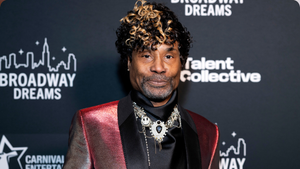LGBTQ-inclusive history classes are more important than ever as at least 28 states consider or enact policies banning discussion of so-called divisive concepts in classrooms. Educational institutions' recognition of and interaction with the LGBTQ+ community during LGBTQ+ History Month in October was a sign of progress and a positive step on the path to inclusivity, but isolating this important topic to one month fails to honor its importance in our national and international histories. For students to truly understand the LGBTQ+ community's past and present significance, it is imperative that history and social studies teachers include LGBTQ+ history in their classes throughout the year, integrating it as authentically as other topics on which teachers and state educational standards now focus.
California, New Jersey, Colorado, Oregon, Illinois, and Nevada have passed laws mandating the inclusion of LGBTQ+ content in history and social studies classes; New Jersey's law expands this requirement to all academic subjects. In September, Scotland became the first country in the world to mandate an LGBTQ-inclusive curriculum. Teachers have started to recognize the need to incorporate LGBTQ+ history in more meaningful ways. This progress, however, is stymied by overt backlash at multiple levels and state standards that fail to meaningfully include LGBTQ+ history, if they do so at all. It is thus essential that we consider why inclusivity is so important and how it benefits students, teachers, and communities.
First, omitting LGBTQ+ history perpetuates heteronormativity and leaves this and future generations unable to participate in important conversations or understand the context around them. The LGBTQ+ community is far more prominent in the 21st century than in previous eras. LGBTQ+ characters appear more frequently in books, television shows, and movies than less than a decade ago. LGBTQ+ individuals and issues dominate headlines across media platforms, and debates that directly affect students, like transgender girls' place on athletic teams, persist. Students who have not been exposed to this history -- or whose education situates history as events that center straight, often white, cisgender men and women -- are at a deficit in forming opinions about current events and trends, many of which affect them and their peers. Social studies education is meant to open minds and promote civic participation -- meaningfully including LGBTQ+ history is integral to meeting that intention.
Second, silencing LGBTQ+ history silences our students. If we want students to care about history, they need to see themselves in the resources and lessons from which they learn. This is a motivating factor for teachers who actively teach inclusive curricula, many of whom assert that the way they connected to history as students led them into teaching careers. For students, representation is a vital part of the learning process and is too often absent for students who identify as LGBTQ+. Instead, students learn about the same historical figures and events throughout their K-12 education. Integrating diverse groups into that narrative and asking students to synthesize the information they learn captures student interest, reflects the multiple identities and perspectives of the young people in a class, and presents a more accurate version of history.
Third, students are interested in this history. In an interview for my research, a New York City educator reported that students became immersed in the LGBTQ+ history she taught, opting to engage with research projects on local LGBTQ+ events and figures. The infrequency with which most students are introduced to these topics makes the moments when they are even more eye-opening. Students are aware of the gaps in their education. They encounter information, often with a particular perspective, from myriad sources outside of school and are frustrated by curricular omissions that fail to reflect their culture and meet their needs.
LGBTQ+ history opens minds and creates real change for students and schools.
Identity is not controversial and should not be a divisive concept, yet we live in a world where people of all ages continue to utter the phrase "that's so gay" and believe doing so is acceptable. It is imperative that we honor our students' identities and value the ideas with which they enter our classrooms. History has the power to build understanding and compassion, especially as students discover it together. Regardless of the LGBTQ+ content teachers choose to teach, the outcome of their efforts can reflect the power of this subject matter. Let's celebrate LGBTQ+ History Month each October and incorporate LGBTQ+ history throughout the year so that students across the country learn this history along with -- not separate from -- other topics in U.S. and global history.
Stacie Brensilver Berman, a former New York City public school teacher, is a visiting assistant professor at the New York University Steinhardt School of Culture, Education, and Human Development and the author of LGBTQ+ History in High School Classes in the United States Since 1990 (Bloomsbury, 2021). Instagram: @staciebrensilverberman




































































Charlie Kirk DID say stoning gay people was the 'perfect law' — and these other heinous quotes